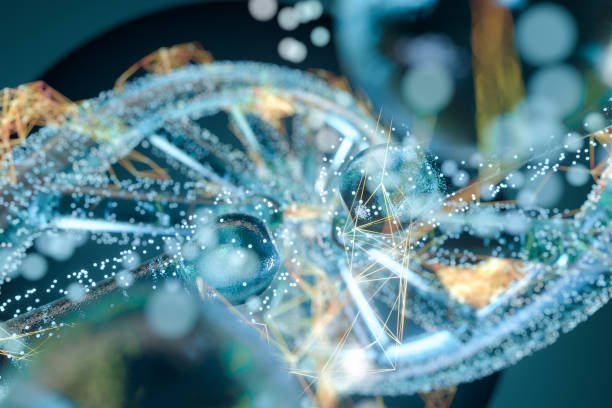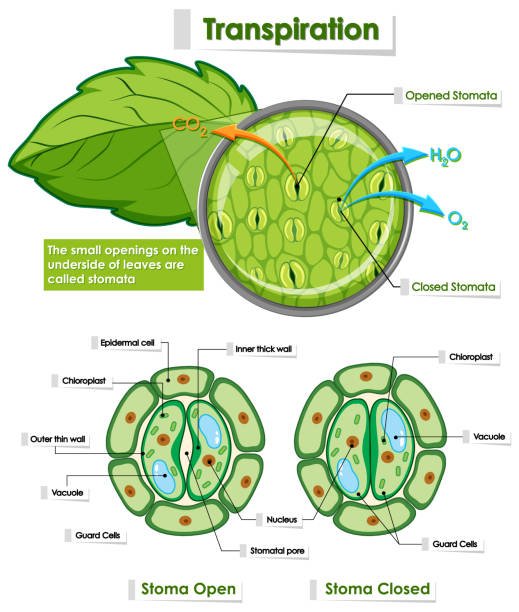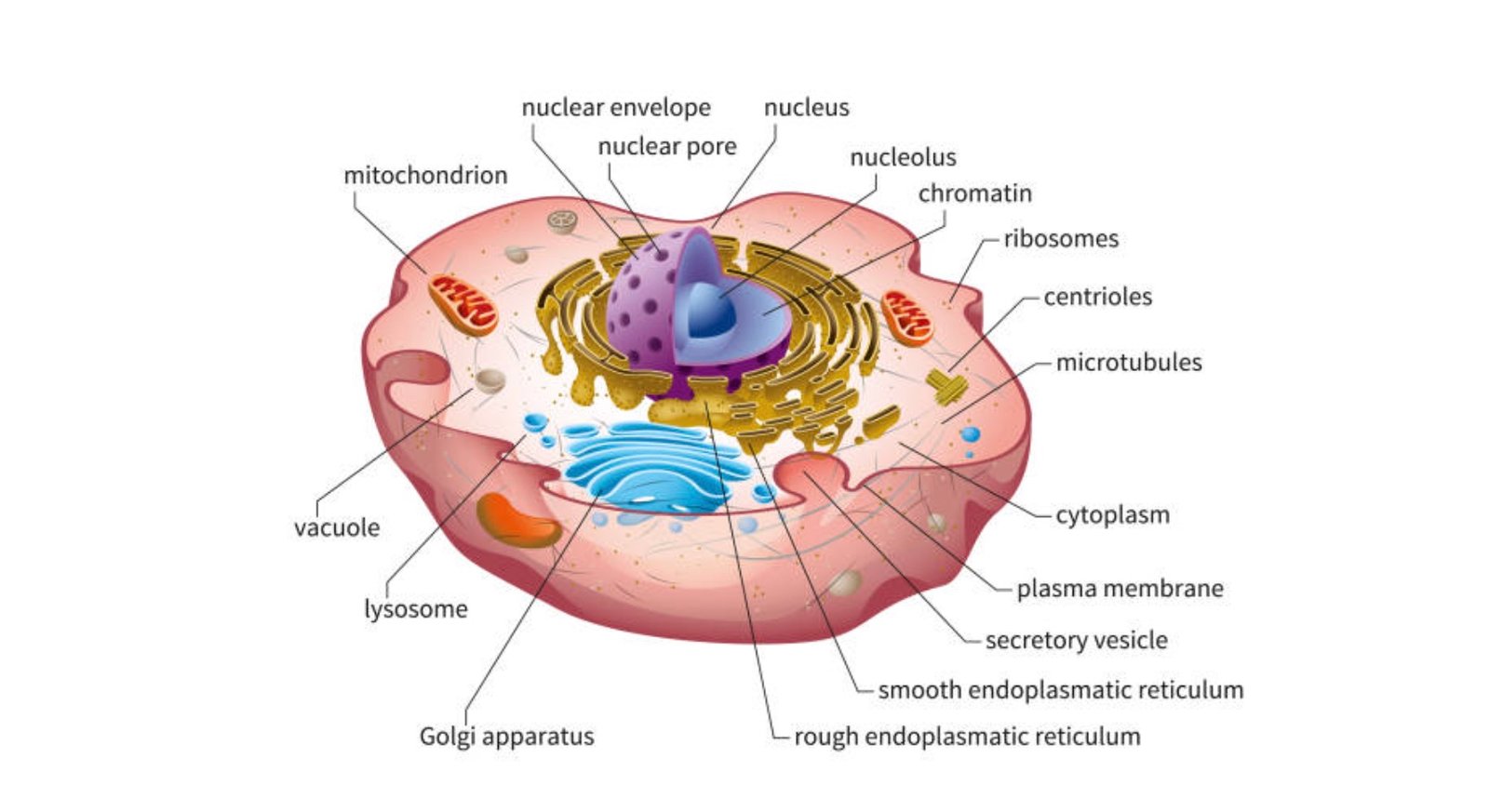Life Sciences Grade 11 Study Notes for Term 2
Term 2: CAPS Topics Overview
- Week 1: Orientation
- Week 2-3: Photosynthesis (CAPS p. 42)
- Week 4-5: Cellular Respiration (CAPS p. 45)
- Week 6-11: Animal Nutrition (CAPS p. 43)
Core Concepts, Skills, and Values
- Revise basic cell structure from Grade 9 and 10
- Revise basic photosynthesis and respiration from Grade 8
Term 2 Week 2-3: Photosynthesis Grade 11 Notes
Photosynthesis is a vital biological process that allows plants, algae, and some bacteria to convert light energy into chemical energy, ultimately producing food for themselves and oxygen for other organisms. Let’s break down the process and its significance.
- Intake of raw materials: Photosynthesis requires three primary raw materials: water (H2O), carbon dioxide (CO2), and light energy (usually from the sun). Water is absorbed through the roots and transported to the leaves, while carbon dioxide enters the plant through small pores called stomata.
- Trapping and storing energy: In the chloroplasts of plant cells, light energy is trapped by chlorophyll, a green pigment, and other accessory pigments. This energy is stored in the form of adenosine triphosphate (ATP) and nicotinamide adenine dinucleotide phosphate (NADPH), which are energy-rich molecules.
- Formation of food in chloroplasts and storage: The energy stored in ATP and NADPH is used to convert CO2 into glucose through a series of reactions called the Calvin cycle. Glucose can be used as an immediate energy source or transformed into other complex carbohydrates (such as starch and cellulose) for storage.
- Release of oxygen: During the light-dependent phase of photosynthesis, water molecules are split into hydrogen and oxygen atoms. The hydrogen atoms are used to produce ATP and NADPH, while the oxygen atoms combine to form molecular oxygen (O2), which is released as a byproduct.
- Light and dark phase: Photosynthesis consists of two main stages: the light-dependent phase (or light reactions) and the light-independent phase (or dark reactions). The light-dependent phase occurs in the thylakoid membranes of chloroplasts and generates ATP and NADPH. The light-independent phase, also known as the Calvin cycle, occurs in the stroma of chloroplasts and uses ATP and NADPH to synthesize glucose from CO2.
Importance of photosynthesis:
- Release of oxygen: Oxygen produced during photosynthesis is essential for aerobic organisms, including humans, who rely on it for cellular respiration.
- Uptake of carbon dioxide: Photosynthesis helps regulate Earth’s atmosphere by removing CO2, a greenhouse gas, and converting it into glucose.
- Food production (trapping energy): Photosynthesis is the basis of the food chain, providing energy and organic matter for all other organisms, either directly or indirectly.
Effects of variable conditions on photosynthesis:
- Light: Photosynthesis rates increase with light intensity up to a certain point, after which they plateau.
- Carbon dioxide: Higher CO2 concentrations generally lead to increased photosynthesis rates, but only up to a certain threshold.
- Temperature: Photosynthesis rates are affected by temperature, with optimal rates occurring within a specific temperature range.
Greenhouse systems and ATP’s role in the cell: Greenhouse systems are designed to optimize photosynthesis by controlling light, temperature, and CO2 levels. They also maintain proper humidity and provide essential nutrients to maximize plant growth. ATP, generated during photosynthesis, plays a crucial role in cellular processes as it serves as the primary energy currency for cells.
Investigation: Light is necessary for photosynthesis: Experiments using plants grown in the dark or under different light conditions show that light is essential for photosynthesis. In the absence of light, plants cannot produce ATP and NADPH, which are needed for the Calvin cycle, ultimately leading to a lack of glucose production and limited growth.
Summary
- Process of photosynthesis
- Intake of raw materials
- Trapping and storing energy
- Formation of food in chloroplasts and storage
- Release of oxygen
- Light and dark phase
- Mention only, no biochemical detail required
- Importance of photosynthesis
- Release of oxygen
- Uptake of carbon dioxide
- Food production (trapping energy)
- Effects of variable conditions on photosynthesis
- Light, carbon dioxide, temperature
- Greenhouse systems and ATP’s role in the cell
- Investigation: Light is necessary for photosynthesis
Downloadable PDF download:
Week 4-5: Cellular Respiration Grade 11 Notes
Cellular respiration is a fundamental biological process that allows cells to convert nutrients into energy, which is necessary for all living organisms to survive and thrive. In Grade 11, students delve into the intricacies of cellular respiration, focusing on both aerobic and anaerobic respiration.
Aerobic respiration is a type of cellular respiration that occurs in the presence of oxygen. This process takes place in the cytoplasm and mitochondria of cells, and it involves three main stages: glycolysis, the Krebs cycle, and oxidative phosphorylation.
- Glycolysis: This stage occurs in the cytoplasm and involves the breakdown of glucose, a six-carbon sugar, into two molecules of pyruvate, a three-carbon compound. This process generates a small amount of ATP (adenosine triphosphate), the cell’s primary energy currency, and NADH, an electron carrier.
- Krebs cycle: Also known as the citric acid cycle or TCA cycle, the Krebs cycle occurs in the mitochondria. During this stage, pyruvate is further broken down into CO2, ATP, and high-energy electron carriers like NADH and FADH2.
- Oxidative phosphorylation: This final stage also occurs in the mitochondria and involves the electron transport chain (ETC). The high-energy electrons carried by NADH and FADH2 are transferred along the ETC, ultimately generating a large amount of ATP through a process called chemiosmosis.
Anaerobic respiration, on the other hand, occurs in the absence of oxygen. One common example is lactic acid fermentation, which takes place in our muscles during strenuous exercise. In this process, pyruvate is converted into lactic acid, which helps regenerate NAD+ to keep glycolysis going and produce small amounts of ATP.
Anaerobic respiration also plays a crucial role in various industries. For example, in beer brewing and bread making, yeast cells undergo alcoholic fermentation, a type of anaerobic respiration that produces ethanol and CO2. The CO2 generated in this process is responsible for the rising of bread dough and the carbonation in beer.
When comparing aerobic and anaerobic respiration, the most significant difference is the presence or absence of oxygen. Aerobic respiration is much more efficient, producing a large amount of ATP, while anaerobic respiration generates only a small amount of ATP.
Investigations into cellular respiration often involve studying the consumption of oxygen and production of carbon dioxide. Oxygen is required by living organisms during aerobic respiration, as it acts as the final electron acceptor in the ETC, forming water. Simultaneously, carbon dioxide is produced as a waste product in both aerobic (during the Krebs cycle) and anaerobic respiration, as glucose or other organic molecules are broken down. These processes highlight the critical role of cellular respiration in the energy metabolism of living organisms.
Summary
- Aerobic respiration
- In cytoplasm and mitochondria
- Glycolysis, Krebs cycle, oxidative phosphorylation (no biochemical detail required)
- Anaerobic respiration
- Lactic acid production in muscles during exercise
- Role in industries like beer brewing and bread making
- Comparison between aerobic and anaerobic respiration
- Investigations
- O2 is required by respiration
- CO2 is produced by living organisms during respiration
Downloadable PDF download:
Week 6-11: Animal Nutrition
- Dentition differences for herbivores, carnivores, and omnivores
- Human nutrition
- Macro-structure of the alimentary canal and associated organs
- Functions of different parts
- Processes of nutrition
- Ingestion, digestion, absorption, assimilation, egestion
- Significance of each process
- Mechanical or physical digestion
- Types and functions of different teeth
- Processes of chewing and peristalsis
- Chemical digestion
- Enzymes: carbohydrases, proteases, lipases
- Production, substrate, pH, and end-products
- Absorption and assimilation
- Small intestine adaptations for absorption
- Structure and significance of villi
- Importance of hepatic portal system
- Homeostatic control
- Hormonal control of blood sugar levels (links with Grade 12)
Consolidation and Revision
- Review and consolidate material covered in Term 2






